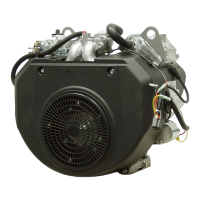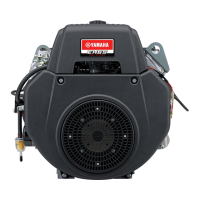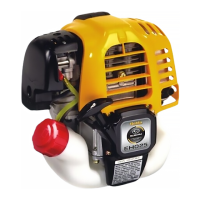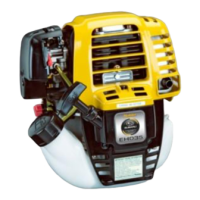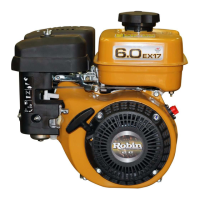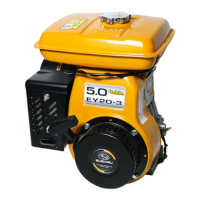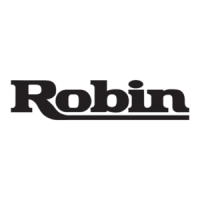
Do you have a question about the Robin America EH12-2, EH17-2, EH25-2 and is the answer not in the manual?
| Brand | Robin America |
|---|---|
| Model | EH12-2, EH17-2, EH25-2 |
| Category | Engine |
| Language | English |
Defines engine output when throttle is fully open after break-in.
Defines optimum engine output for life and fuel efficiency.
Defines torque at maximum output and specific revolution.
Graphs showing engine output and torque vs. revolution.
Single piece aluminum diecasting with integrated cylinder liner.
Aluminum diecasting on output shaft side of crankcase for engine mounting.
Forged carbon steel with induction-hardened crank pin.
Aluminum alloy diecasting connecting rod and aluminum alloy piston.
Special cast iron piston rings with specific profiles for sealing.
Made of special cast iron or forged carbon steel for D and B types.
Intake valve on flywheel side; hard alloy seats and stellite fused to exhaust.
Aluminum diecasting with wedge type combustion chamber for efficiency.
Centrifugal flyweight type for constant speed against load variations.
Flywheel fins provide cooling air; cylinder baffle guides airflow.
Splash lubrication via oil scraper on connecting rod.
Transistor controlled magneto ignition with timing advance.
Horizontal draft, float controlled fuel system with fixed main jet.
Single urethane foam element system; heavy duty type optional.
Balances inertia force by rotating with crankshaft to reduce vibration.
Automatic mechanism lifting exhaust valve for easy starting.
Diagram showing engine cross-section with labeled components.
Tips for safe and effective engine disassembly and reassembly.
Lists specific tools required for disassembly and reassembly.
Step-by-step instructions for disassembling engine parts.
Precautions and steps for reassembling engine components.
Procedure for running in a new or overhauled engine.
Describes the Universal type Transistor Controlled Ignition systems.
Explains the step advancing ignition timing system operation.
Diagrams illustrating standard and electric starter ignition wiring.
Details the float system and its function in maintaining fuel level.
Procedures for disassembling and reassembling the carburetor.
Steps for disassembling and reassembling the recoil starter mechanism.
Covers issues related to fuel system and compression for starting problems.
Lists potential causes for engine misfires.
Identifies common reasons for the engine stopping unexpectedly.
Outlines causes of engine overheating.
Lists causes of engine knocking.
Explains reasons for engine backfiring through the carburetor.
Guidance on engine mounting position and support method.
Importance of fresh air for cooling and fuel combustion.
Safety and performance considerations for exhaust gas discharge.
Notes on belt drive and flexible coupling for power transmission.
Specifications for part dimensions and maximum wear allowances.
Tightening torque values for various engine components.
Recommended engine oil viscosity based on temperature.
Routine checks and cleaning for daily operation.
First maintenance after 20 hours of operation.
Maintenance tasks to be performed every 50 hours or 10 days.
Monthly maintenance checks and cleaning.
Periodic maintenance at 500-600 hour intervals.
Annual maintenance including overhaul and line replacement.
Procedures for proper engine storage to prevent damage.

